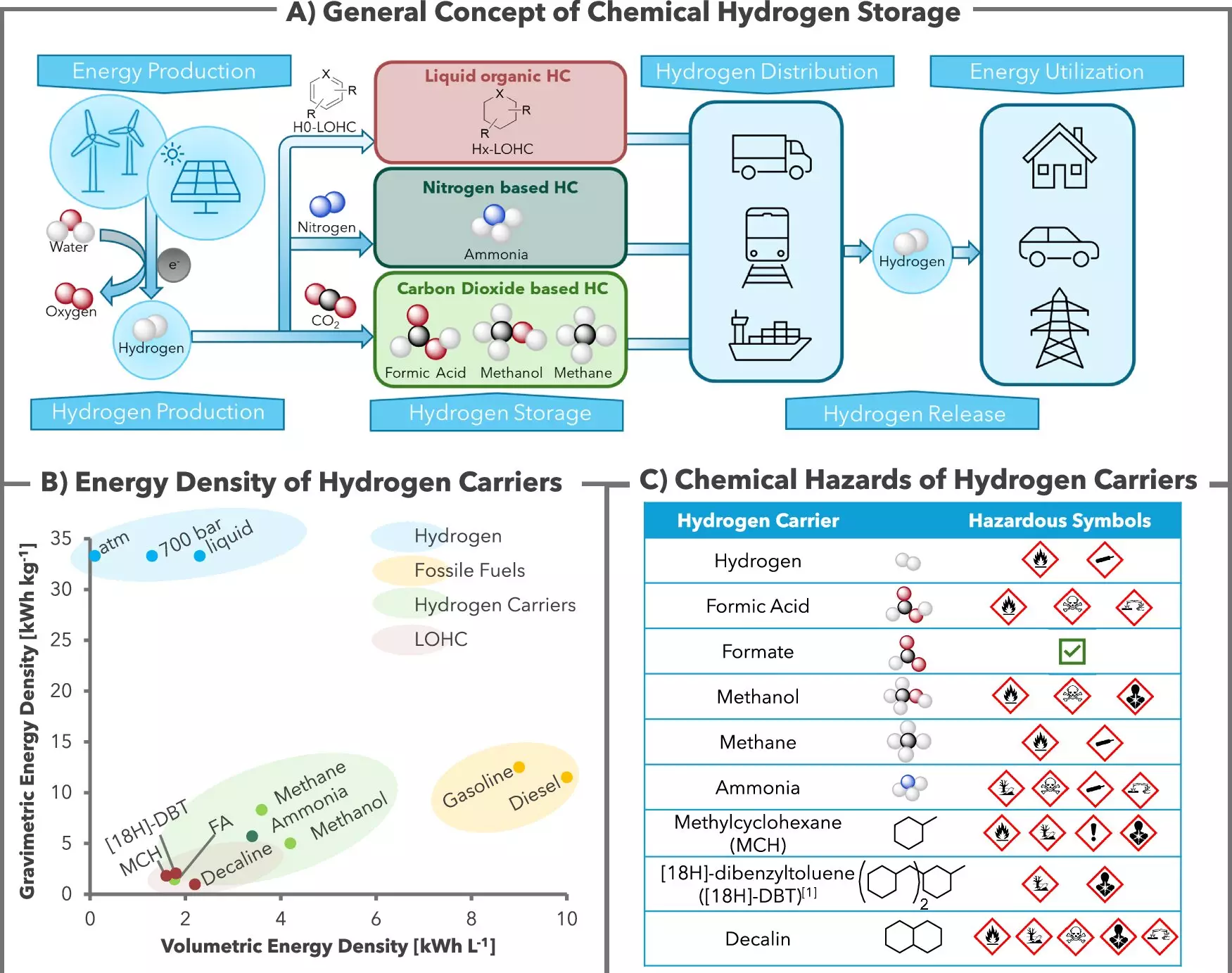The quest for efficient and safe hydrogen storage has emerged as a cornerstone in the transition to sustainable energy systems. Hydrogen is touted as a key player in alternative energy scenarios, yet its volatile and flammable nature poses significant challenges for widespread adoption and utilization. Recent research led by the Leibniz Institute for Catalysis (LIKAT) and the company H2APEX in Rostock unveils a promising method for hydrogen storage, posing a significant leap forward in this field. Their collaborative work, published in *Nature Communications*, showcases the development of a reversible catalytic system that enables hydrogen to be captured and released in a chemically stable manner using potassium bicarbonate—commonly known as baking soda.
At the heart of this innovative storage method lies potassium bicarbonate, providing a non-toxic and abundant alternative for hydrogen storage. When hydrogen (H2) is introduced into a solution of potassium bicarbonate in the presence of a ruthenium catalyst, a chemical reaction occurs, resulting in the formation of formate, a benign salt derived from formic acid. This type of transformation effectively binds hydrogen in a stable form, thereby addressing one of the significant hurdles in hydrogen utilization—its safe storage.
The research team, including Dr. Rui Sang and Ph.D. student Carolin Stein, articulates the core advantage of their system: the ability to release the stored hydrogen with the same catalyst and framework, enabling a seamless bidirectional flow of the reaction and fulfilling criteria for energy storage akin to batteries. With the operation occurring safely at around 60°C, the approach minimizes energy loss during the process, making it a financially and environmentally viable option.
Formate stands out as an advantageous hydrogen storage medium when contrasted against other traditional candidates like methanol, ammonia, and methane. With a focus on toxicity and energy efficiency, formate, specifically formed through the reaction with bicarbonate, demonstrates a high level of practicality in industrial applications. The significant merit of this chemical storage lies in its transportability; formate can be stored in standard plastic containers and shipped using conventional tankers, much like liquids such as milk or diesel.
The practical implementation of this formate and potassium bicarbonate system offers promising applications particularly in rural areas, where sporadic energy generation from renewable sources like solar or wind can be effectively harnessed. During times of excess energy generation, hydrogen can be stored, and during demand spikes, the retained hydrogen can be released, creating a versatile grid system that mimics a battery setup.
Importantly, the production process established by LIKAT and H2APEX is CO2-neutral, a noteworthy achievement in the context of climate change and greenhouse gas emissions. Traditional methods of hydrogen extraction can often result in the release of CO2 as a byproduct, a factor that greatly diminishes their attractiveness in the fight against global warming. However, the innovation highlighted in this research holds the potential to capture hydrogen sustainably, thus conserving CO2 within the system while generating pure hydrogen free of contaminants, ready for use in fuel cells.
Over six months of testing, the researchers achieved over 40 successful cycles of hydrogen storage and release, producing up to 50 liters of hydrogen with an impressive average purity of 99.5%. This remarkable accomplishment underscores the viability of the system in practical applications with only minute quantities of ruthenium catalyst utilized, evidencing not just an effective approach but also a sustainable and economically favorable one.
With H2APEX planning to build up their findings for a larger demonstrative unit, the prospects for commercialization of this hydrogen storage technology are bright. The ongoing collaboration with LIKAT and the utilization of their technical center, Catalysis2Scale, are pivotal steps toward bringing this innovative approach to market. Potentially, by the close of 2025, the chemical symbol for hydrogen may transform from merely representing a simple gas to embodying H for hope—a beacon signaling the advancements in energy transition technology.
The research from LIKAT and H2APEX paves the way for integrating hydrogen more seamlessly into our energy landscape. With the promise of cheaper, safer, and CO2-neutral hydrogen storage, the energy sector’s shift toward renewables might finally gain the momentum it critically needs.


Leave a Reply